Project Heldenberg bei Wetzdorf
The reconstruction of a ring ditch and several buildings from the Middle Neolithic Lengyel culture
A main topic of the Lower Austrian national exhibition 2005 on Heldenberg was the culture of the ring ditches of the Lengyel culture. For the exhibition, employees of VIAS have reconstructed a full-size ring ditch and a settlement section with four buildings.
The exhibition was visited by about 262,000 people between May and October. The open air area will be open to visitors in the coming years.
Scientists' interpretive approaches on the usage of Neolithic circular ditch systems range from cattle compounds, cemeteries and fortifications to meeting places, courts, calendars and observatories.
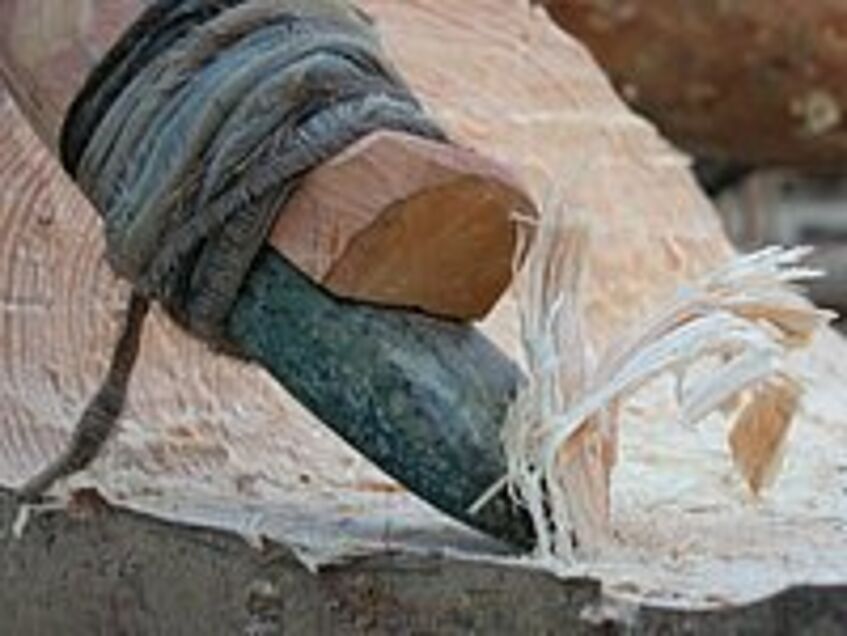

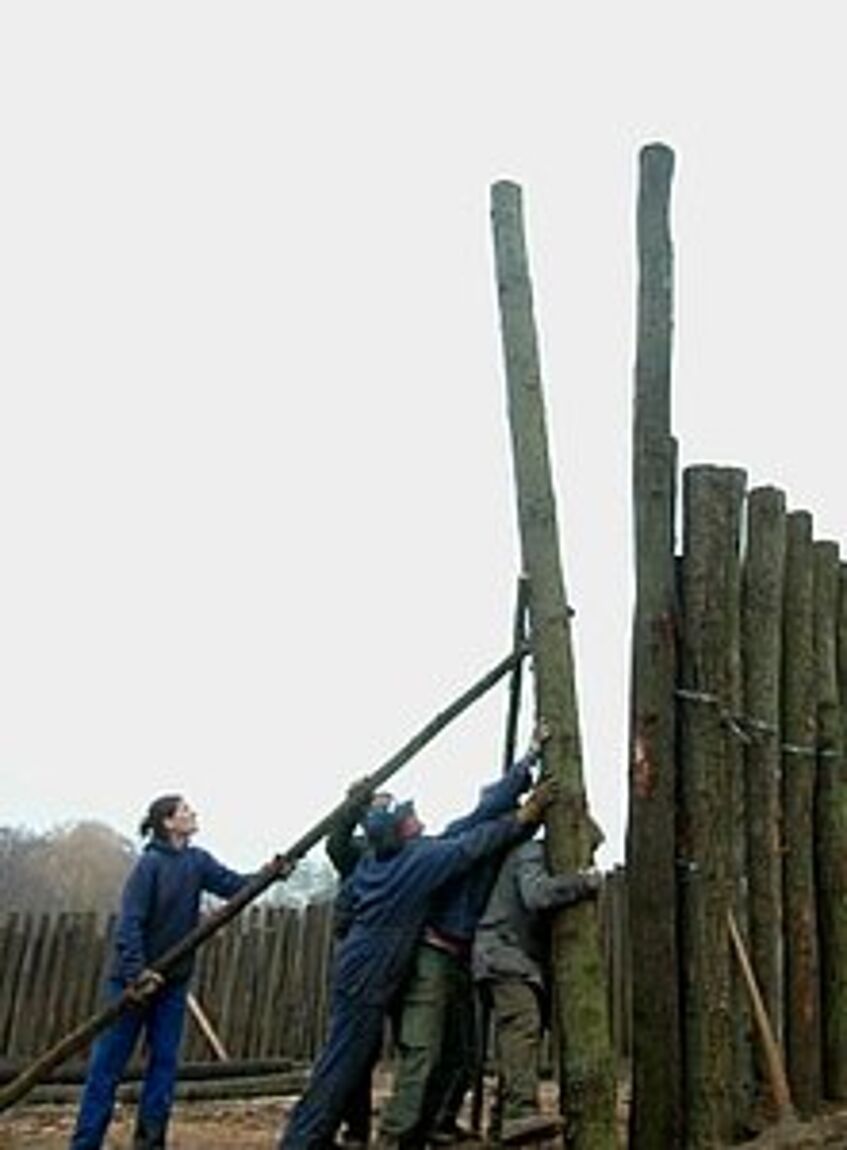

The construction of these architectural models on a scale of 1: 1 on the Heldenberg was done in part with replica tools made of stone, bone and wood. This provided the opportunity for scientific experiments on the subject of wood processing in the Stone Age in terms of experimental archeology.
The obtained data allow us to make extrapolations to a possible original construction effort in the Neolithic in order to approach the reality of the life of the ring ditch cultures.
As a model for our ring ditch reconstruction the circular ditch system of Schletz with two circular palisades and a V-shaped ditch with two entrances (market town Asparn a.d. Zaya / Schletz, dating 4900 / 4850-4500 BC) was used. The trench had a diameter of about 49 m, at the entrances more than 65 m.
The working model developed on the basis of our detailed hands-on studies shows that 30 workers out of an estimated village population of about 200 people could have completed the construction of the Schletz circular ditch system in addition to the agricultural obligations in two to three years.
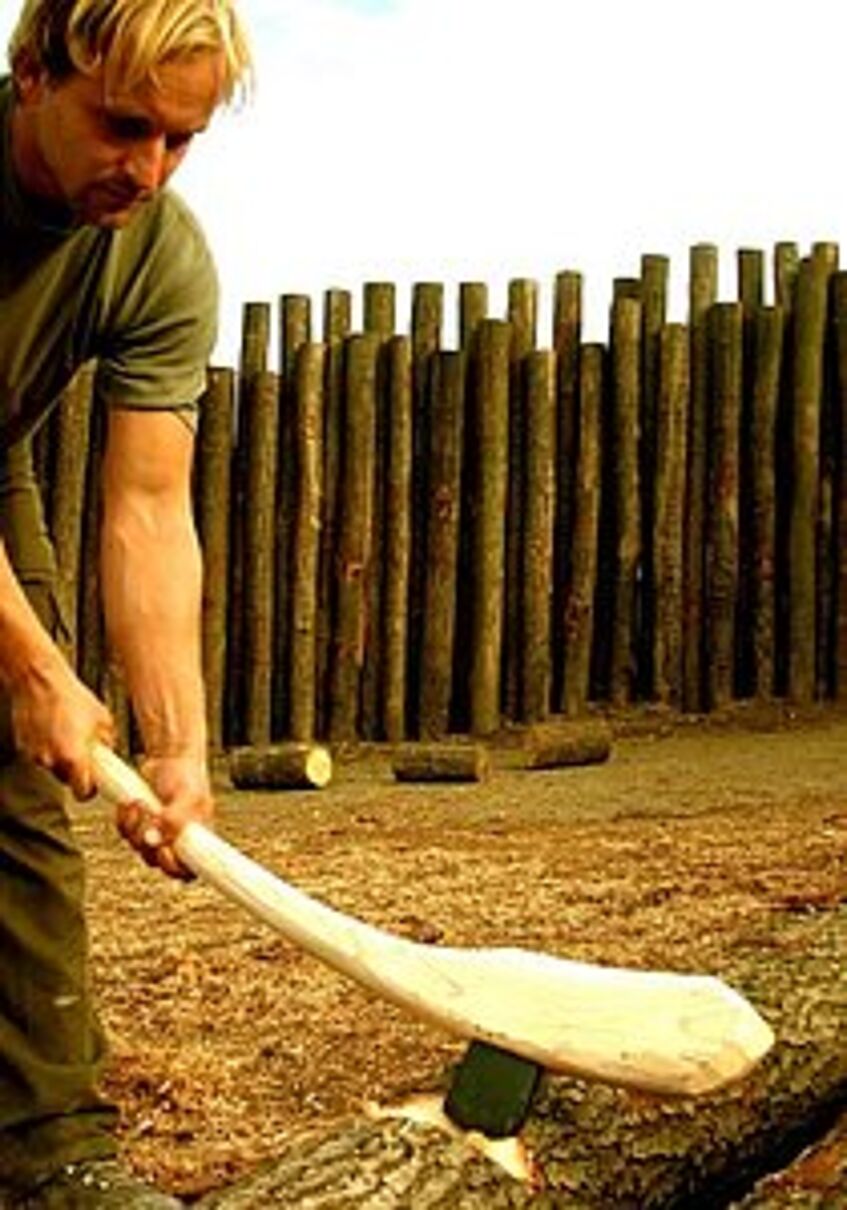

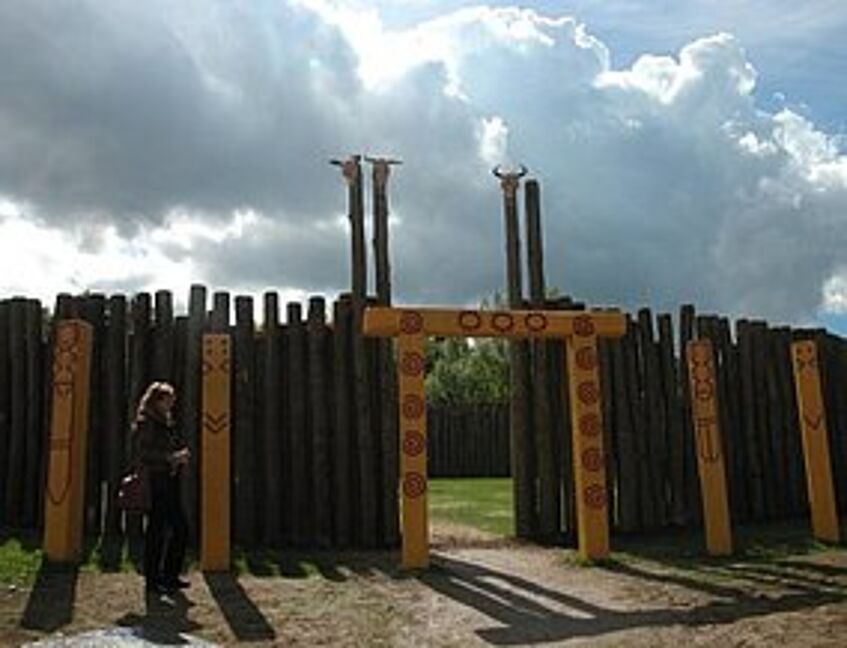

Most likely the square edged posts of the outer palisade were carved or painted with signs or symbols or were done figuratively. We tried to achieve a comparable effect by painting contemporary symbols and stylised figures with red and yellow pigment colours.
The wooden palisades have a clearly sound-enhancing effect inside, which is strongest in the absolutely opaque middle area.
During the erection of the four buildings, the question arose as to whether, starting with the Middle Neolithic period, it would have been possible to use the block construction technique in addition to the traditional post construction method in the construction of buildings. Schletz's House 1 was erected follwing archaeological results as a block building with a centre post and post setting. It showed us that block construction would have been feasible for the people of the Lengyel culture. In the roof area, a solution variant with bound rofe and lath wood appeared arguable.
The gable ends are made of wickerwork with clay plaster, the roof is covered with reeds.
An outer wall was decorated using pottery models with colored ornaments. In the interior, according to findings from Schletz, a large kitchen with a fire place, oven, meat roast and various storage pits was set up.
The other three buildings were built as post buildings.
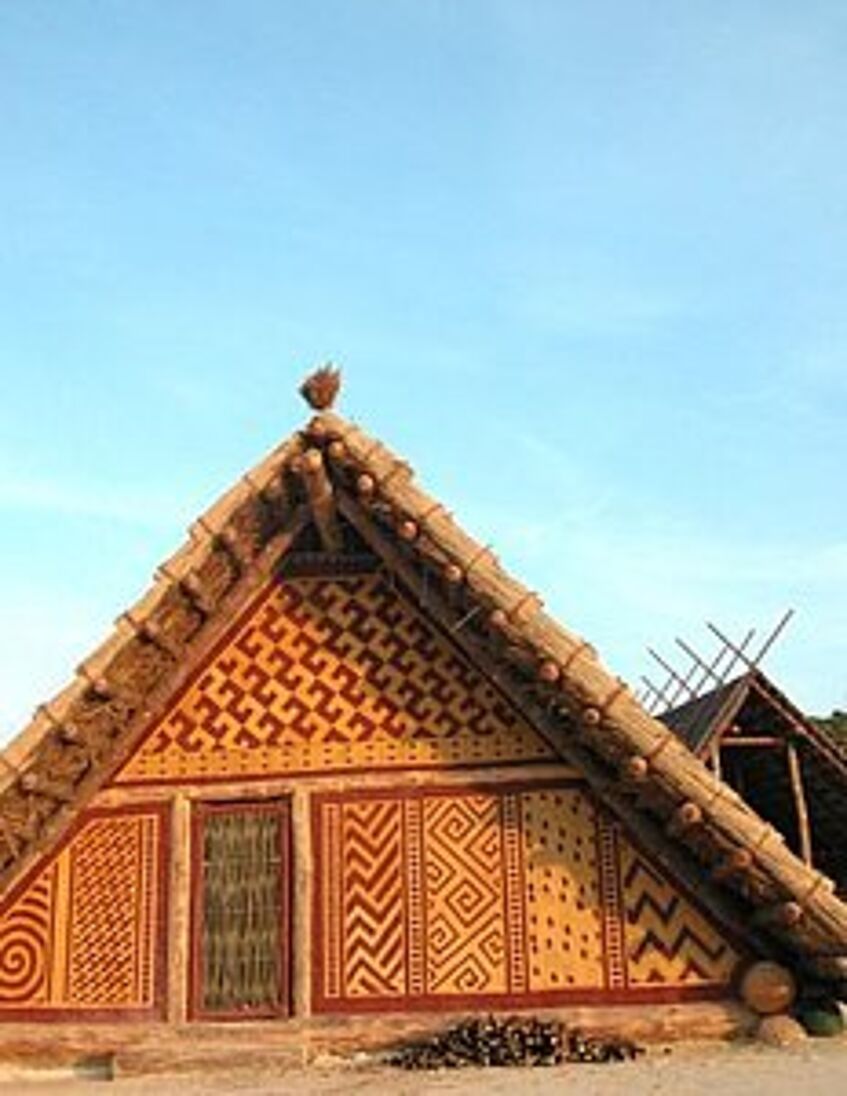

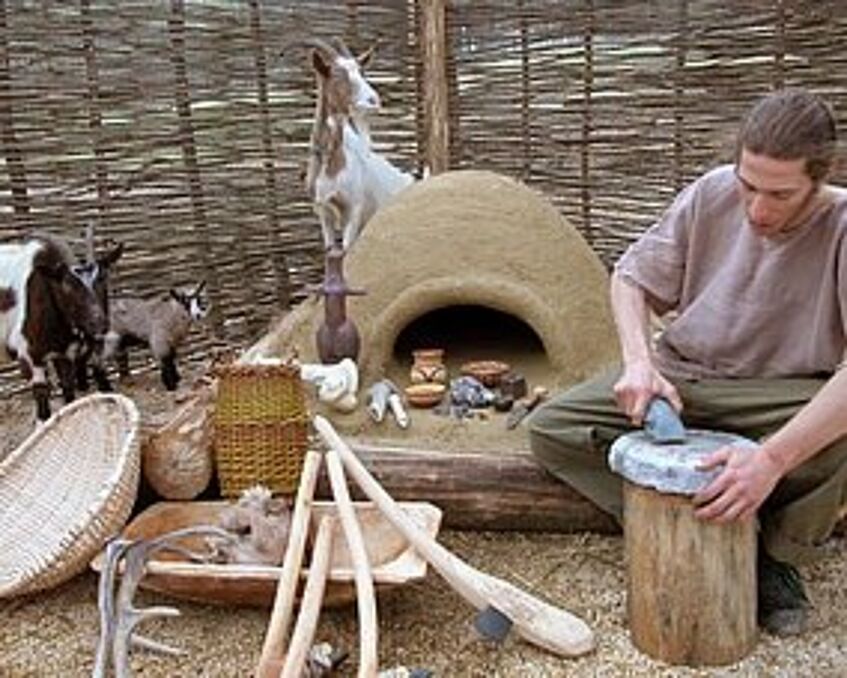

When processing Neolithic wood, people were forced by the physical limits of available tools made of wood, stone and bone to process the material in a relatively fresh state "probably even in the felling year", otherwise the tools would have broken. For this reason, in the Neolithic we can speak of a "technology of green wood".
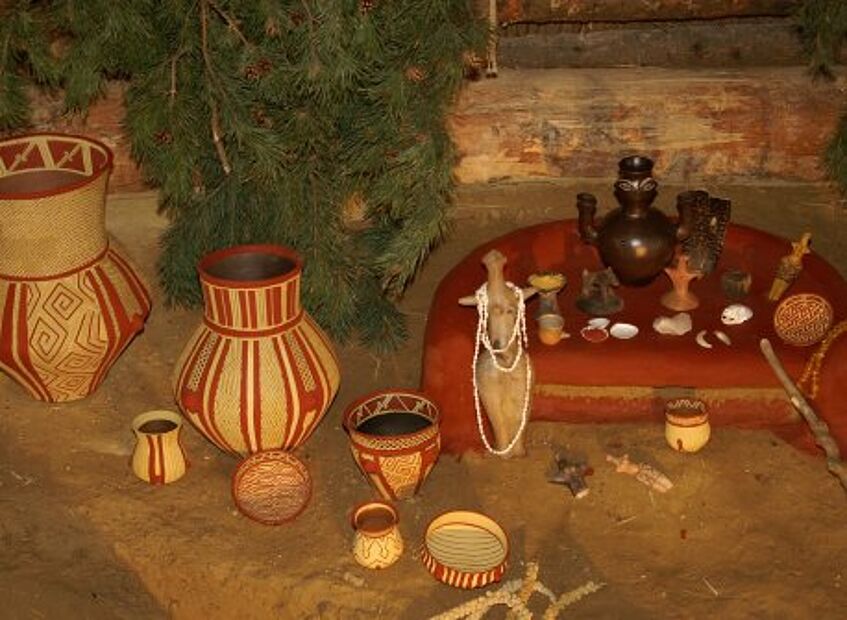
Information and contact:
Gemeinde Heldenberg
Wimpffen-Gasse 5
3704 Kleinwetzdorf
Tel.:+43 (0) 2956/ 2553
Fax:+43 (0) 2956/2553-14
E-Mail: gemeinde@heldenberg.gv.at
Web: http://www.heldenberg.gv.at
